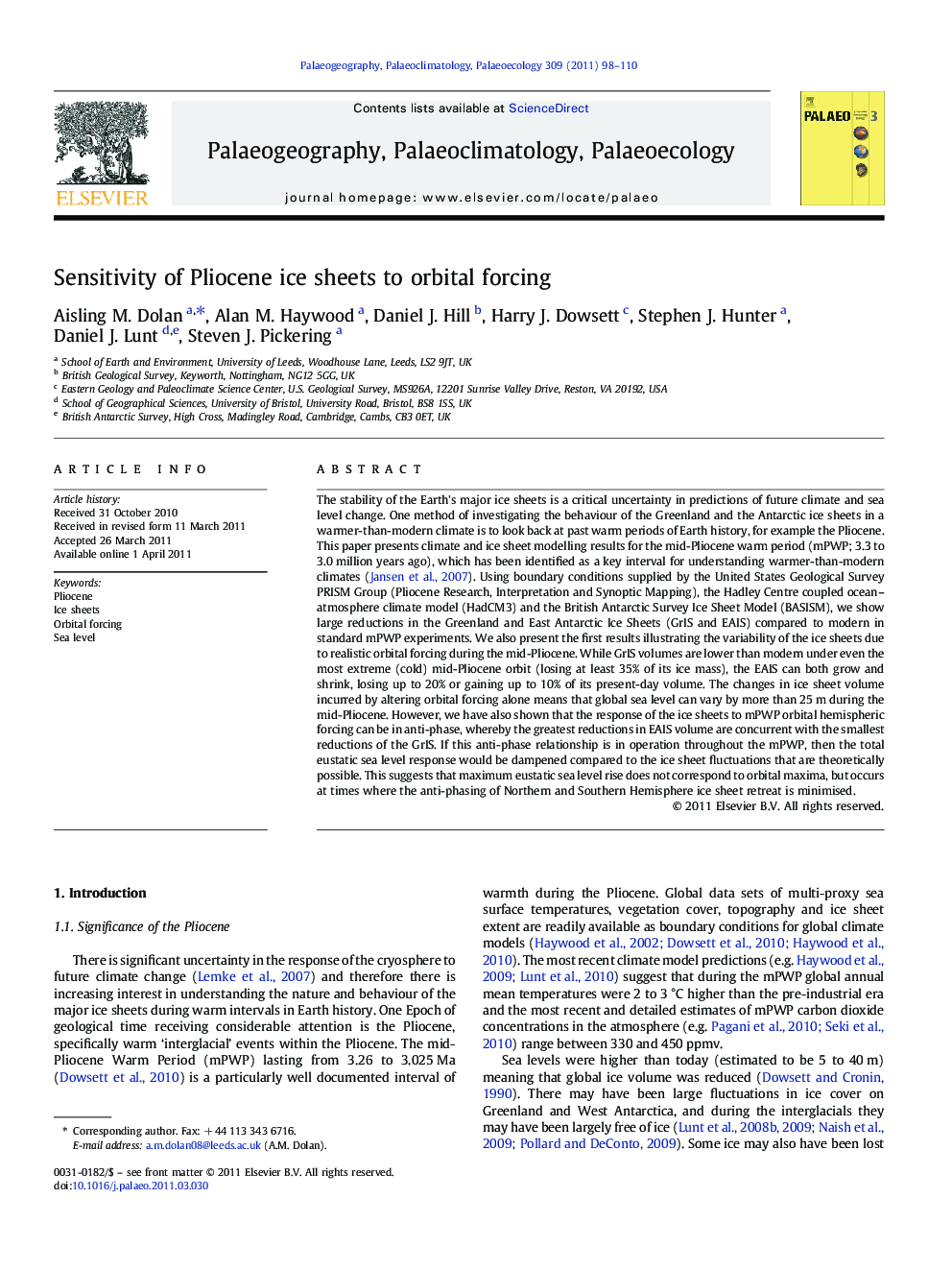| کد مقاله | کد نشریه | سال انتشار | مقاله انگلیسی | نسخه تمام متن |
|---|---|---|---|---|
| 4467176 | 1622250 | 2011 | 13 صفحه PDF | دانلود رایگان |

The stability of the Earth's major ice sheets is a critical uncertainty in predictions of future climate and sea level change. One method of investigating the behaviour of the Greenland and the Antarctic ice sheets in a warmer-than-modern climate is to look back at past warm periods of Earth history, for example the Pliocene. This paper presents climate and ice sheet modelling results for the mid-Pliocene warm period (mPWP; 3.3 to 3.0 million years ago), which has been identified as a key interval for understanding warmer-than-modern climates (Jansen et al., 2007). Using boundary conditions supplied by the United States Geological Survey PRISM Group (Pliocene Research, Interpretation and Synoptic Mapping), the Hadley Centre coupled ocean–atmosphere climate model (HadCM3) and the British Antarctic Survey Ice Sheet Model (BASISM), we show large reductions in the Greenland and East Antarctic Ice Sheets (GrIS and EAIS) compared to modern in standard mPWP experiments. We also present the first results illustrating the variability of the ice sheets due to realistic orbital forcing during the mid-Pliocene. While GrIS volumes are lower than modern under even the most extreme (cold) mid-Pliocene orbit (losing at least 35% of its ice mass), the EAIS can both grow and shrink, losing up to 20% or gaining up to 10% of its present-day volume. The changes in ice sheet volume incurred by altering orbital forcing alone means that global sea level can vary by more than 25 m during the mid-Pliocene. However, we have also shown that the response of the ice sheets to mPWP orbital hemispheric forcing can be in anti-phase, whereby the greatest reductions in EAIS volume are concurrent with the smallest reductions of the GrIS. If this anti-phase relationship is in operation throughout the mPWP, then the total eustatic sea level response would be dampened compared to the ice sheet fluctuations that are theoretically possible. This suggests that maximum eustatic sea level rise does not correspond to orbital maxima, but occurs at times where the anti-phasing of Northern and Southern Hemisphere ice sheet retreat is minimised.
► Using climate and ice sheet modelling we investigate mid-Pliocene ice sheets.
► Mid-Pliocene warm period ice sheets are sensitive to imposed orbital forcing.
► The Greenland Ice Sheet is reduced under all Pliocene orbital configurations.
► The East Antarctic Ice Sheet can both grow and lose volume compared to modern.
► Global sea level response is dampened as the ice sheets in this study are out-of-phase.
Journal: Palaeogeography, Palaeoclimatology, Palaeoecology - Volume 309, Issues 1–2, 15 August 2011, Pages 98–110